
- Touring & Bikepacking Bikes

The Fastest Bikes of the Tour Divide Ultra Race (4,400KM Non-Stop)
Table of Contents
Frame material, drivetrains, gear ratios, the most popular tour divide bike, update: the top-10 tour divide bikes for 2022.
The Tour Divide is an annual off-road ride traversing the length of the Rocky Mountains, from Canada all the way to the Mexican border. The course is over 4,418km long (2745mi), and along the way, riders will gain over 60,000 metres in elevation (200,000ft).
The clock begins at the grand depart and doesn’t stop until riders cross the finish line. And by the way, the ride is strictly self-supported. The fastest riders will complete the course in around two weeks, covering approximately 280 kilometres per day (174mi).
It’s safe to say that the Tour Divide is an extreme test of both the body and mind.
It’s also very interesting from a gear optimisation perspective, as a few small differences in bike setup will allow riders to make their lives a bit easier. In this video, we will be analysing 121 different bike setups from this year’s Tour Divide to find out what makes the best possible setup.
The statistics I will be drawing upon have been wonderfully collected by BIKEPACKING.com in the form of two articles ( HERE and HERE ), where riders from all around the world discuss their bike, bag and gear highlights.
As these articles separate bikes based on whether they use a drop bar or flat bar, this seems like a great place for us to start.

A bit over half of the riders interviewed this year are using drop bar bikes (55%).
When people think ‘drop bars’, they think ‘speed’. But speed alone is not how most will pick a handlebar for the Tour Divide. This is a very long event, so comfort is the likely reason that riders choose one handlebar design over another. Contrary to popular belief, the widespread use of the different bar types demonstrates that many bar designs can be ergonomic and comfortable – it’s really just a case of personal preference.
But comfort aside, there is likely an aerodynamic advantage to using drop bars.
When it comes to the aerodynamics of cycling, you ideally want to make your body shape more aerodynamic (Cd), your frontal area smaller (A) – or both. By using drop bars, your hands and elbows do not sit as wide, allowing you to reduce your frontal area and optimise your body shape.
A bit of napkin maths suggests that drop bars could save two or three hours over the full Tour Divide course (75kg/165lb rider, 15kg/33lb bike, 140 watts power output).
You can learn more about the aerodynamics of touring and bikepacking HERE .

While we’re still on the topic of handlebars, one of the best possible ways to improve both your speed and comfort is to fit aero bars to your bike. Most Tour Divide riders seem to agree, as 77% of them are using aero bars this year.
This is partly because you can make your body shape more aerodynamic with an aero bar, allowing you to ride faster with the same effort. But arguably, it’s the additional comfort that’s the most appealing feature.
Consider this, Tour Divide riders at the pointy end of the race spend upwards of 20 hours per day riding their bikes. This results in a lot of localised body fatigue. Aero bars offer your body a break by providing a different riding position that reduces strain on your arms, wrists, hands and bum, and will allow you to stretch out your back and use different muscles.
If you want to go further down this rabbit hole, I have a detailed article about aero bars HERE .

The saddle you choose is going to be the difference between completing the Tour Divide and having to scratch.
It’s hard to make saddle recommendations to a broad audience – you really have to try them first. But there are some trends here.
Brooks is the most popular saddle brand for the Tour Divide with 20% of riders using one, so they must be doing something right. Ergon saddles have really taken off recently and now more than 17% of riders have one fitted. And WTB has consistently been a popular brand, featuring on 15% of the bikes.
You can learn more about saddle comfort for touring HERE .

Only 13% of riders are using a suspension seatpost (including the carbon leaf-sprung Ergon CF3).
After extensively testing suspension seatposts, I think that many riders could improve their TD experience with one of these. Short travel posts are 100 or maybe 200 grams heavier (3-6oz) than a rigid post. That’s it.
You can read my detailed suspension seatpost article HERE and carbon flex seatpost article HERE .

If you are racing the clock, your tyres are probably the most important component you can optimise over a 4,400km ride.
Some tyres that I’m seeing fitted to TD bikes have been tested on smooth surfaces to roll with 20-watts extra resistance over other tyre sets. A bit of napkin maths suggests that slow tyres could add more than 20 hours of pedalling to a TD run!
But that said, it’s hard to come up with an accurate time figure due to the mix of road surfaces, varying rider weights, tyre pressures and more.
The most popular tyre is the Vittoria Mezcal and you will find it on more than 1/3 of all bikes.
The Mezcal has become the go-to tyre for the TD as it does an incredible job of balancing rolling resistance, puncture resistance, durability and grip. When you move to faster-rolling options like the Schwalbe Thunder Burt, you end up with significantly less grip and a touch less puncture resistance too – which might not keep your mind at ease.
Essentially, there’s a trade-off on all tyres, and it seems that the Mezcal is where most people end up.

The second most popular tyre is the Maxxis Ikon. These are tested to be slower rolling but are known for their reliability – I know ultra racers who have been using them for years and have literally never had a puncture.
I’m not sure why the Continental Race King Protection tyres (7% of bikes) are less popular than in years past. These tyres are what the late Mike Hall used to set the current 13-day, 22-hour course record. They’ve been tested to be ultra-fast rolling, they’re protective of punctures, and some riders have even raced the TD twice on the same set (8,800km).
If you know why these tyres are less preferred nowadays – let me know.

In terms of wheel diameter, there are three common sizes on bikes tackling the TD: 26-inch, 27.5-inch and 29-inch.
As the largest diameter wheel offers the smallest ‘angle of attack’ over bumps and depressions in the road, it can maintain the highest speed. 88% of riders are now picking the big 29″ wheels, and it drops off to just 7% of riders using the smaller 27.5″ wheels.
The average tyre width that’s used is 2.2″/55mm. This is likely the sweet spot where riders have the lowest rolling resistance and the most ride comfort on the long dirt roads.

Almost half of all TD riders (49%) opted for a carbon fibre bike frame. This is the obvious choice for an event with over 60,000 vertical metres (200,000ft) climbing, as a kilogram can make a measurable difference here.
A Salsa Cutthroat carbon frame weighs a touch under 1.5 kilograms (3.3lb). In comparison, a similarly tough titanium frame is often about 2.2kg/4.9lb, and steel is closer to 3.0kg/6.6lb.
Again, the napkin comes out and I’ve calculated an extra kilogram for the average rider to be about 1.5 hours over 4,400km. That’s not huge, but it could be the difference between first and second place.

1X drivetrains now make up 82% of all bike setups using derailleurs. This should be unsurprising, as the Tour Divide is an off-road route that demands wide tyres and low gear ratios, and almost all bikes that accommodate these features now come with 1X drivetrains.
You’ll notice that there aren’t too many gearbox drivetrains at the Tour Divide this year (4%). But this event has previously been won on a Rohloff 14-speed bike (Ollie Whalley, 2012) – so these drivetrains can be a good idea.
That said, gearbox drivetrains are heavier and less efficient than derailleurs so I suspect that’s why they aren’t popular.
Again, my napkin is out, and I’d estimate the Rohloff would add 3-4 hours in good conditions as a result of its lower drive efficiency, plus you could add another hour or two due to the heavier weight. And the Pinion gearbox could add a total of 10 hours when we factor everything in.

If you want to get up the steep hills without going into the red, you’ll want appropriately low gear ratios on your bike. Tour Divide riders seem to know this well, as the average low climbing gear across all bikes is just 20 gear inches. This is about right for the course.
Achieving less than 20 gear inches is easy on flat bar bikes, but harder on drop bar bikes as there is limited compatibility between drop bar shifters and mountain bike derailleurs. I’m really impressed with the drivetrain workarounds on the drop bar bikes – about a quarter have been ‘hacked’ in some way to achieve 20 gear inches or less.
The most popular hack is the Wolftooth RoadLink . This extends the effective length of your derailleur, allowing you to accommodate a bigger cassette with lower gear ratios. Another nice hack is the fitment of the Ratio Technology upgrade kit that mates 11-speed SRAM road shifters to 12-speed mountain bike derailleurs.
If you have deep pockets, the SRAM AXS wireless road shifters pair with the wireless AXS mountain bike derailleurs to fit 10 to 52-tooth cassettes. It seems that few drop bars riders are on a small budget as one-in-three bikes are using this setup!

Almost all riders are using clip-in pedals (86%).
Most of the performance advantages of clip-in pedals are found under acceleration , so there likely isn’t a big disadvantage to those who choose flats. I’d guess that clip-in pedals are simply what most people are used to when they ride their road or mountain bikes, and as a result, it’s just their preference.
Hydraulic disc brakes are also preferred by the majority of riders (82%). They are very reliable these days and often require less grip strength to pull your bike to a stop. This is particularly important when your hands are fatigued after a couple of weeks of riding!

Only 30% of all TD bikes are using suspension forks.
Suspension will undoubtedly reduce rider fatigue on the rougher sections of the route. And given that you can lock out most suspension, the biggest disadvantage is simply that it adds weight to your bike – most suspension forks are approximately 1.5kg heavier than carbon forks.
My napkin says that’s a bit over two hours of ride time for the average rider. So, what do you think? Is it worth it?

Incredibly, Salsa made up a whopping 39% of all Tour Divide bikes this year. In fact, there were 8X more Salsas than the second-most popular bike brand (Niner).
Salsa Cycles are the biggest adventure bike brand in the world right now, and the Cutthroat model, in particular, was designed specifically to excel at the Tour Divide. This model represents 52% of all drop bar bikes here, and it’s not hard to see why – when I take a look at my Bikepacking Bike Buyer’s Guide , the Cutthroat is the only carbon drop bar bike that can fit wide tyres.
And if you’ve ever wondered where the name Cutthroat comes from, the Cutthroat trout is the state fish for all US states that the Tour Divide passes through. You’re welcome.

Through this analysis, I think the seatpost and tyres are the only areas where Tour Divide riders could squeeze out a bit more performance and comfort. But overall, these rigs are really well dialled in. Just lining up for this event requires a lot of research, so I’m not surprised that almost all bikes are perfectly ready for the course.
To finish up, here’s what the average Tour Divide bike is:
It’s a rigid carbon bike fitted with 29″ wheels and running Vittoria Mezcal tyres in the 2.2″ width. The bike has drop bars, clip-in pedals, hydraulic brakes, aero bars and a 1X drivetrain. The saddle is most likely made by Brooks.
There is a high chance that a SRAM wireless drivetrain is fitted, which allows for the pairing of drop bar shifters and a mountain bike drivetrain to give an appropriately low 20 gear inch climbing gear.

There is now a 2022 Tour Divide winner – Sofiane Sehili! He rode a carbon Vitus Rapide to Antelope Wells in 14 days, 16 hours and 36 minutes.
Here are the bike statistics from the top-10 finishers this year: Handlebar Type – 70% flat bar, 30% drop bar Aero Bars – 100% aero bars fitted Saddles – 20% Brooks, 20% Ergon, rest is mixed Seatposts – 70% rigid, 30% suspension (including Ergon leaf-sprung posts) Tyre Model – 60% Vittoria Mezcal, 20% Rene Herse Fleecer Ridge, 10% Maxxis Rekon, 10% Schwalbe G-One Tyre Width – 2.19″ wide average Wheel Size – 100% 29-inch wheels Frame Material – 50% carbon, 40% titanium, 10% steel Drivetrains – 80% 1X drivetrains, 10% 2X drivetrains, 10% singlespeed Low Climbing Gear – 19.9 gear inches average Pedals – 100% clip-in Brakes – 90% hydraulic, 10% mechanical Suspension – 80% rigid, 20% suspension Bike Brands – 20% Salsa, 20% Chiru, rest is mixed
- aerodynamics
- rolling resistance
- Tour Divide
Tour Divide 2023 : The race, the gear, the whys and everything in between
- May 13, 2023
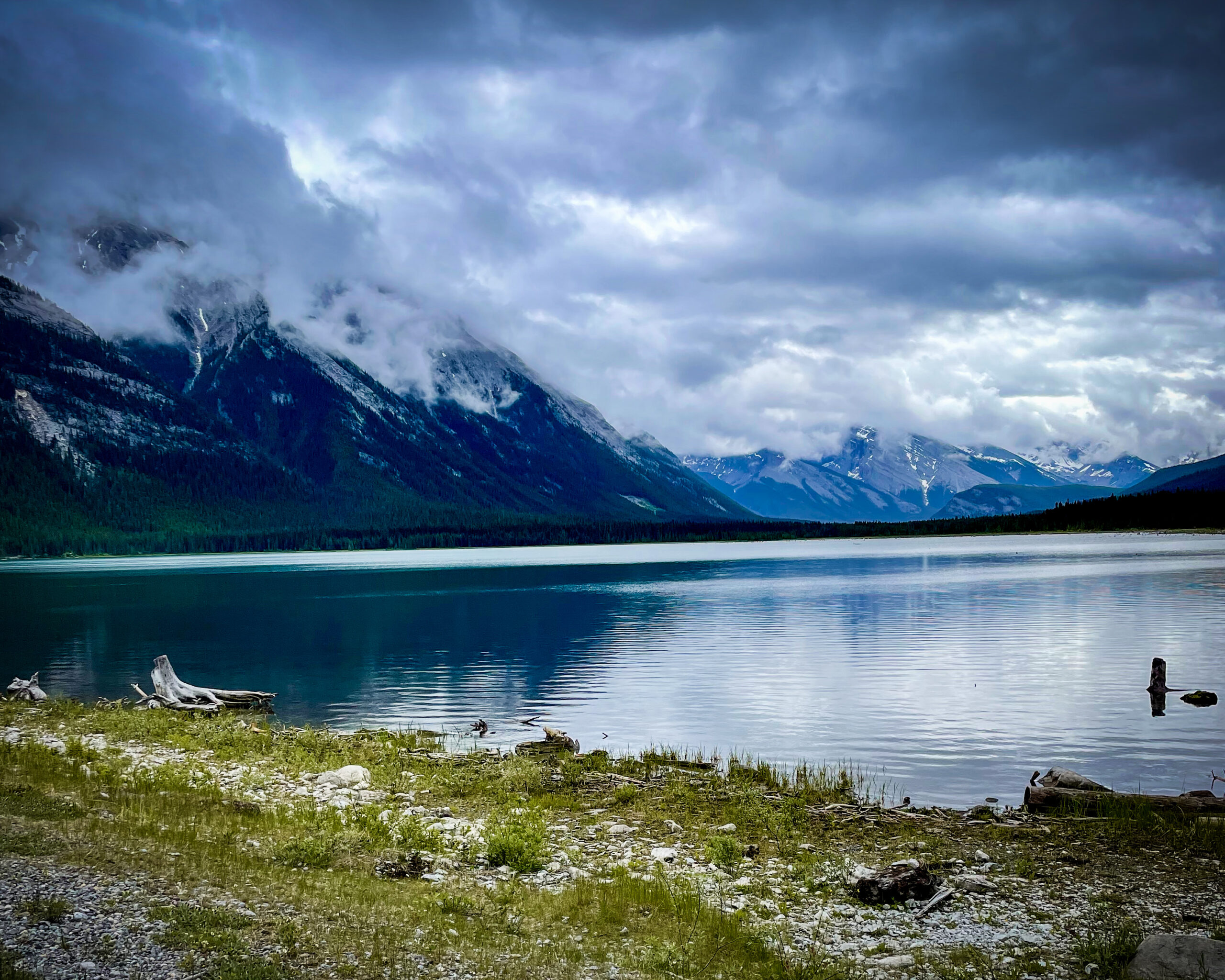
It was just over 2 years ago the first time I ever heard of the Tour Divide. I didn’t even know what bikepacking was or that bikepacking racing was a thing.
By then, I had become a time trialist specialist on the road. I had become obsessed with mastering my mind, mastering the art of executing a perfect time trial. I love it so much. I know very well this feeling, my sight on the road ahead, my head tucked in, my lungs expanding to their max, my legs flowing over the pedals. That feeling when I get in the zone, when I’m able to fully surrender and let no amount of pain bother me. It’s pretty amazing. And quite freeing.
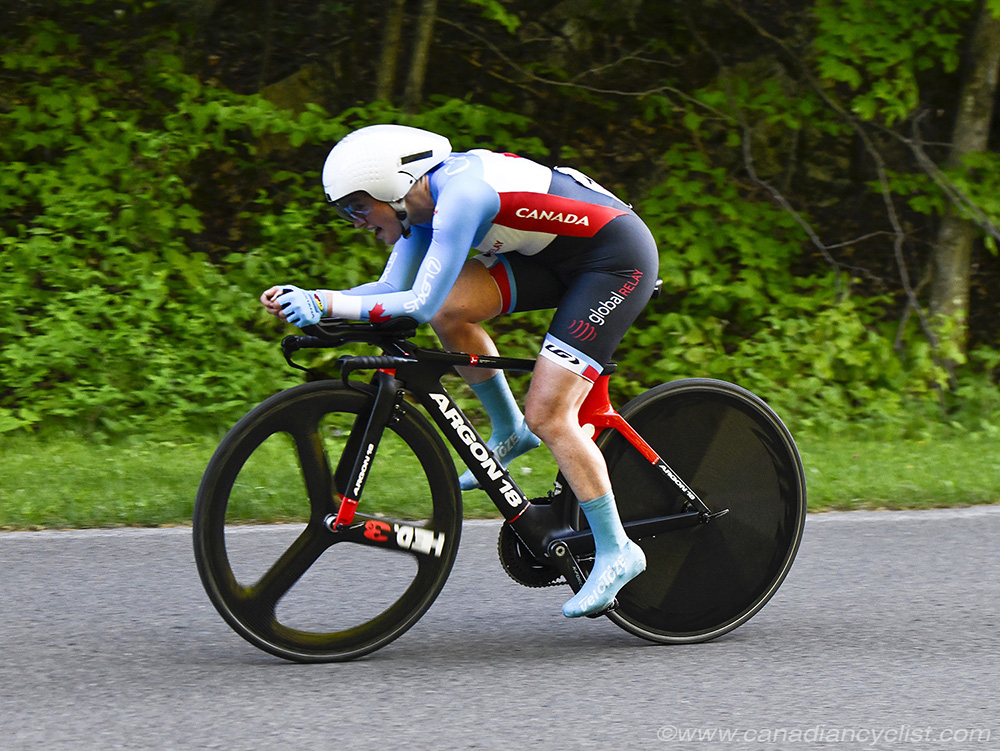
A few years ago when I was reading this passionating book “How Bad Do You Want It”, the author spoke of how references are limiters to the mind and the body. If you can remove the information that you know as your references, you could push your body much further. I decided to test the concept and did a 20-minutes blind test – no numbers, no references. Increasing my best 20-min power by 18% was a shocking, yet insightful experience. “You are stronger than you think.” Simply remove the thinking.
I was on the stationary bike trainer when a youtube video came up about the Tour Divide (the documentary was I Just Want to Ride featuring Lael Wilcox – record-holder of the fastest female time on the Tour Divide). A 4,300 km time trial. WOAH! Now everything I know as references are quite irrelevant. How the hell is this humanely possible? Then… What if I remove what I know as possible. What if this was just another example of the amazing things a body can do when you remove references. I was immediately filled with curiosity.
I couldn’t sleep that night. I had to find out: where is the limit of what I can do. Am I able to apply what I came to master in road cycling time trial to a 4,300km bikepacking time trial?
Covering a distance of 4,300km, the Tour Divide is one of the longest and arguably the hardest ultra-endurance bike race on the planet. From Banff (Alberta) in Canada, to Antelope Wells (NM) at the border of Mexico, the course takes the riders along breathtaking scenic landscapes of the Great Divide Mountain Bike Route (designed by the Adventure Cycling Association back in the 1990s), one of the most well-known off-road touring route that attracts bikepackers and bike tourists from all over the world.
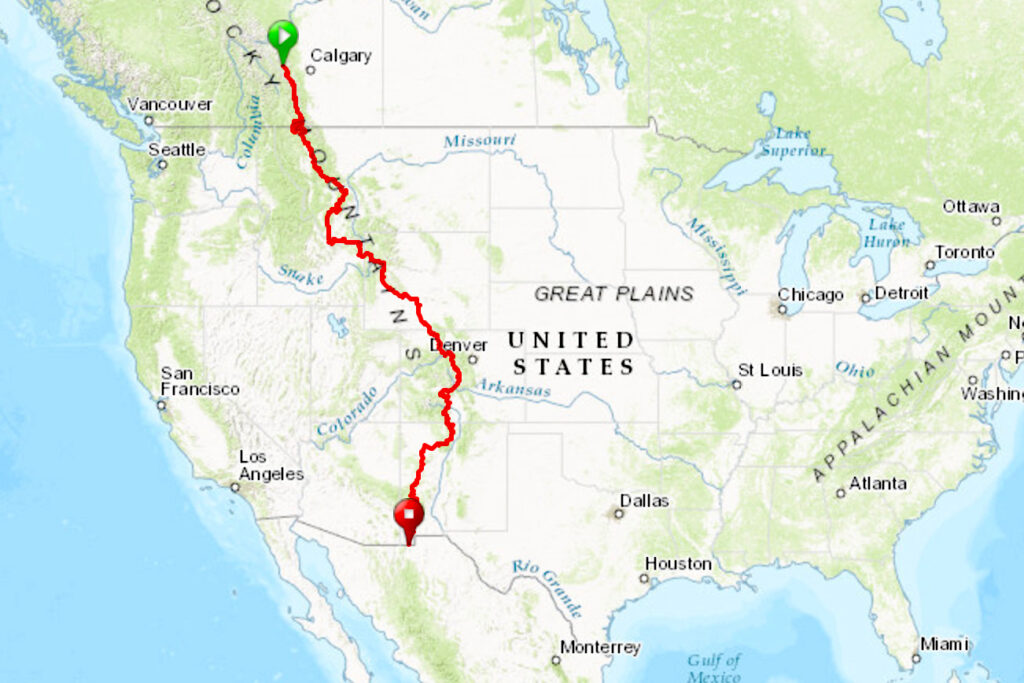
The race has been going on for many years, starting on the 2nd Friday of June of each year, but only started to gain popularity lately with the rise of bikepacking and bikepacking events. The 2023 edition has currently over 250 participants registered to this day (one month before the start). 26 of them are female or non-binary, the highest non-male participation rate ever!
The Tour Divide is more than a cycling race, it is the definition of an endurance and resilience test. The race is self-supported, which means you are not allowed to receive any help. You can use public services such as hotels and restaurants, but you must carry everything you need (clothes, food, camp & sleep, tools). The route goes through many remote areas where a satellite device is the only way of communication. High-altitude mountain passes, changing weather, and wildlife encounters are all part of the race.
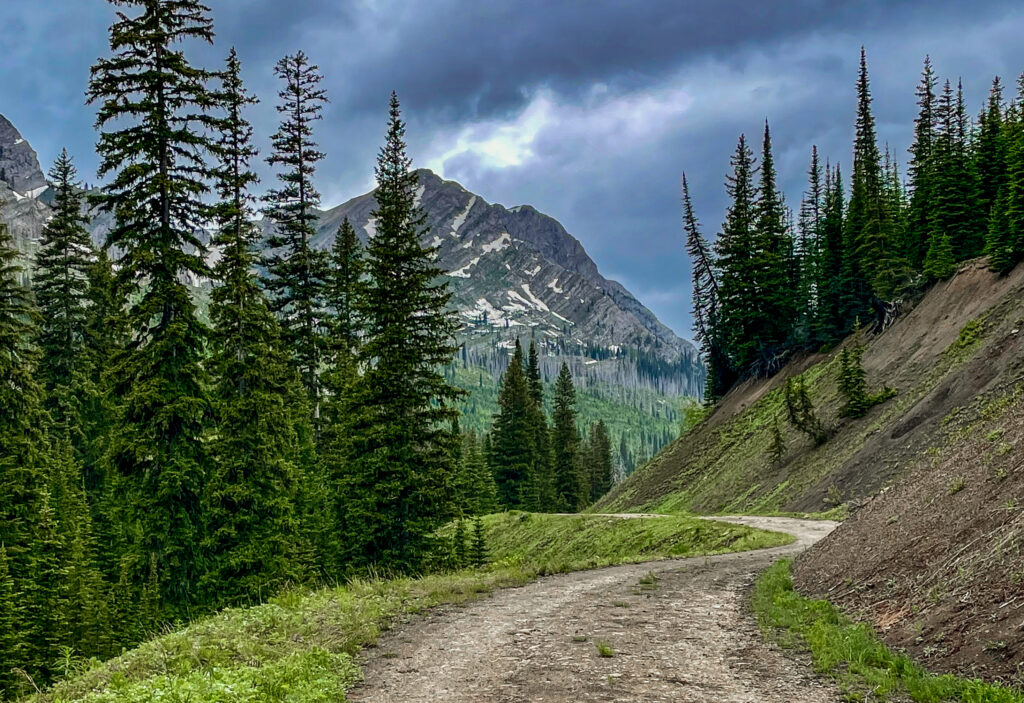
Getting ready – my journey to the start line
There is the physical journey, then it’s freacking scary! 2 years ago I had never camped before, never packed gear on a bike, never ridden in the dark or encountered a bear.
Before I could attempt this, I had a few classes to take on. So, 3 weeks after watching the youtube video about the Tour Divide, I departed for my first bikepacking trip. An improvised, but oh so life-changing, one-month bikepacking trip in Utah and Arizona hooked me up. From there, I would use bikepacking for training when I’m not racing.
Last year (2022), I was still racing as a pro road cyclist when a series of events occurred, one of them being the cancellation of BC Superweek, my beloved crit series in July. I was going to fly to western Canada (near Banff) for Road Nationals, but then I had an opening in my calendar. “What a great opportunity to check out the course of the Tour Divide!” I thought.
I flew with all the gear I had and set to ride as much as I can of the route after racing Nationals. I had a wonderful ride in the time trial at Nationals, I rode the absolute best I could. Another 2nd place, but I felt satisfied. I love when I leave it all on the course. I was not going to be National Champion but that’s how it is. I don’t have less joy riding my bike fullgas. It was time to swap bikes.
So, a week later on July 4th, 2022, I departed from Banff and headed south on my pretty beat-up Cannondale FSi mountain bike hardtail, to see if I was capable of riding the terrain, to overcome my fear of bears (oh, I did come face-to-face with a grizzly! But that’s for another storytelling time), to overcome my fear of riding in the dark and confronting the weather of the high-altitude mountain passes.
The course was absolutely mind-blowing!!! Every day, I was overwhelmed by the beauty of the landscapes surrounding me. The “non-technical” terrain was very much challenging for my roadie skillset. I was very unprepared for the hike-a-bike and the rain, but it was so empowering to come out of these challenges stronger.
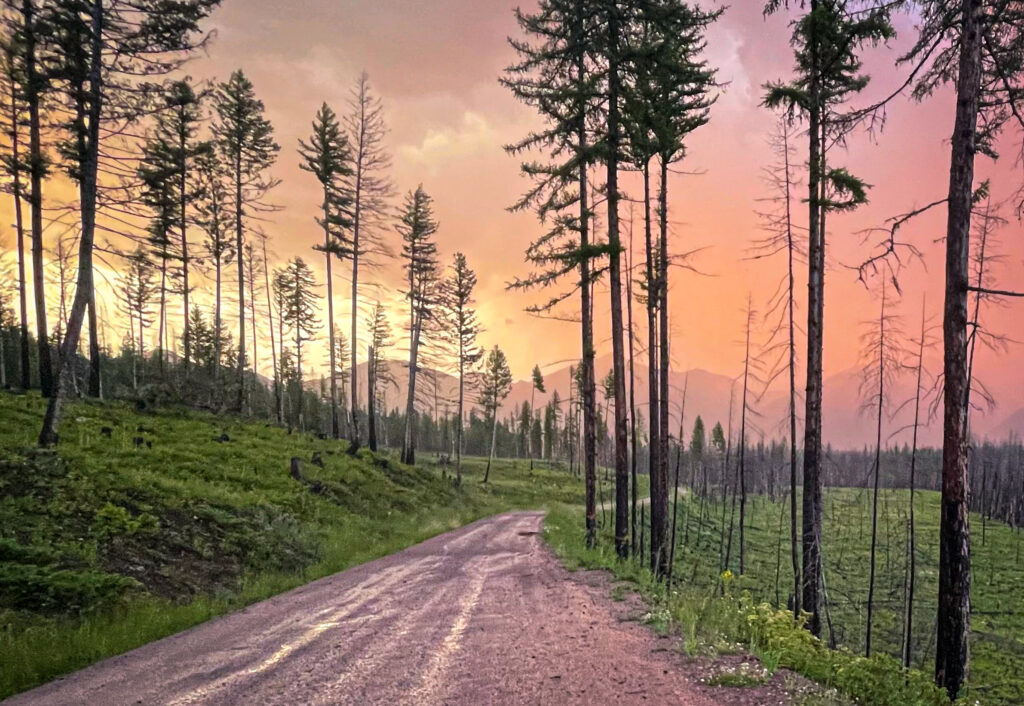
I completed the route in 28 days (about twice as long as the race-winning time), averaging over 10 hours of riding to cover 150km each day -it was the hardest thing I had ever done !!
This course recon was the first step to getting prepared to race. It also made obvious that I needed to improve my MTB skills, to strengthen my upper body for the hike”push”-a-bike, to fasten my camp-to-bike transition, a warmer and more reliable sleep system, and better overall gear and bike.
My 2023 Tour Divide Gear List
By now I have gathered enough bikepacking experience to know better what I want and need for my ideal setup. So I have reached out to my favorite companies and I’m very fortunate that they embarked on my dream race project with me! Here is the best bikepacking setup I could build for racing the Tour Divide :
- Cannondale Scalpel HT, 100mm suspension fork
- Sram X01 mechanical 34T x 10-52 Eagle cassette
- SL4 Lucky Jack – Duke Racing Wheels (XC carbon wheels, 1200g a pair)
- Son 28 dynamo hub
- Ergo grips and aero bars
- Maxxis Ardent Race and Ikon 2,2 tires
Packs: Backcountry Series by Apidura
- Apidura 11L handlebar pack (clothes)
- Apidura 2x 1.2L feed pouches, 1L top-tube feed bag, 1L rear top-tube pack for accessories
- Apidura 4L frame pack with a hydration bladder (food & water)
- Apidura 1.8L down-tube pack (tools and pharmacy)
- Apidura 10L saddle pack (sleep system)
- possibly a hip pack or hydration vest… TBD
- 7mesh cargo bib (pad removed) paired with 7mesh Foundation Shorts
- 7mesh Hollyburn light thermal pants
- 7mesh Chico Anorak pull-over
- 7mesh merino buff
- 7mesh Skypilot Gore-tex rain jacket
- MEC 800-down jacket
- Mountain Hardwear 800-down pants
- MEC rain pants cover
- Showerpass waterproof gloves and socks (available at MEC)
- Defeet merino gloves
Sleep System :
- MEC Talon 0 degree C 800-down quilt
- MEC Vectair Ultralight insulated air mat
- Mountain Laurel Designs FKT bivy
- Warmlite Gear Vapor barrier long-sleeve jersey
- Warmlite Gear Vapor Barrier socks
Electronics :
- Garmin 540 Solar for navigation (MEC)
- Garmin inReach satellite tracking (MEC)
- GoPro Mini 11 for self-documenting the race
- iPhone and AirPods
- Sinewave Cycle Beacon2 headlight (dynamo powered)
- 1x 5,000 mpa power bank, 1x 10,000 mpa power bank, fast-charging wall charger, and cables
- Black Diamond headlight (MEC)
- Set of rear lights (MEC)
Tools, toiletry, and other items :
- Sunscreen (lots of sunscreens)
- Toothbrush, toothpaste
- Laundry handwash soap
- Eye mask, ear plugs
- ibuprofen, allergy med
- Caffeine, melatonin
- BeFree water filter and water purifying tablets
- Muc-Off Hydro chain lube with a rag
- Hand pump, tire plugs and sealant
- Multi-tools with chain breaker
- Spare derailer hanger, spare brake pads, chain links
- Patch repair kit
- Protein powder, BCAAs, Greens powder
Thank you to my sponsors for gearing me up with the best. Find this gear online: MEC outdoor gear , 7mesh cycling apparel , Apidura bikepacking bags , Duke Racing Wheels , Warmlite Gear vapor barrier gear .
Live-Tracking – From June 9th, 2023
We will depart from Banff (AB) on June 9th, 2023. You can follow the race live via satellite tracking here .
Even though I will try to film as much as possible, I will not be posting a lot on social media during the race (because it’s a race!) and there isn’t much service between towns. If you do follow my progress, I will love to read your messages of encouragement!
You can find me on instagram at @msoleilblais74 and you can subscribe to my Youtube Channel to be notified when my Tour Divide film is up!
But why in the hell would someone want to race this?
I have long asked myself this question. What is my motivation, why do I want to race the Tour Divide and put all of the efforts behind such a big commitment? Multiple answers come to my mind.
First, it’s the curiosity, the need to push the limits and see how far I can go. I see this as a continuation of my fascination for the power of the mind and playing with the concept of removing references. To see what I could do if I go into something where I have no references at all. Can I carry my time trial state of mind over 4,300km ? How resilient am I?
Second, it’s the transformation. Endurance has never been something I particularly excel at naturally. I had a strong anaerobic profile as a pro cyclist but that is quite useless over a long distance. I think you never become ready for the biggest race of your life, just like you don’t do a marathon before your first marathon. You “become” someone who is capable of doing it, by doing it. I want to become the person at the finish line who was able to race that distance and push her limits to a new level. No matter what happens, I will come out of this test stronger and more resilient.
Lastly, I want to live the experience. The experience of racing my bike all day, all night. Riding as far as I can, every day, with nothing else on my mind than going further. I quite enjoy the solitude of riding long distances in remote areas, and I look forward to re-discovering the magnificent, yet challenging course that is the Tour Divide.
Stay tuned, peace out
Full heart, fullgas
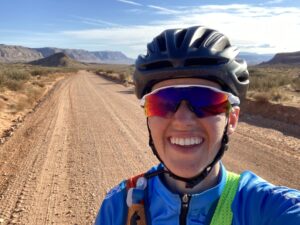
Marie-Soleil Blais
Bike Racer & Adventurer
You might also enjoy
A bikepacking story – full film release.
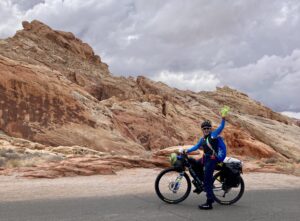
Bikepacking 101 – Tips for your first bikepacking or bike touring trip

[leadin] Unassuming cyclist Josh Kato crushed last year’s Great Tour Divide, a self-supported race that crosses the United States north to south over the Rocky Mountains.[/leadin]

Imagine your longest day in the saddle. Let’s go with 100 miles….that’s a typical long distance endurance ride. Now double it. Then, repeat…for 14 days, 11 hours, and 37 minutes straight. And for good measure, do it over the most rugged mountain range in America and entirely off-pavement.
That’s precisely what the 40-year-old Washington nurse and endurance cyclist did at last year’s Great Tour Divide (GTD). His time not only won the 2,745-mile event, but it set the course record.
We caught up with Kato to discuss the highs and lows of endurance cycling, and his secret training weapons, including patience, a fat bike, and donuts!

GearJunkie: Two years ago, your GTD didn’t go as planned. Can you tell us more about that?
Josh Kato: 2014 was supposed to be the year I was going to accomplish a dream of competing in the Tour Divide. I was riding much stronger than I had anticipated and on day three of the race, in Montana (around mile 300), I ended up crashing in the mud and snow. It was a bit of a worst-case scenario type of wreck. I landed wrong, fractured my fibula, tore my hamstring, and gashed the back of my leg which subsequently got infected. I rode until around mile 1,100 before I called it quits.
That hurt. Dropping out of something I had poured so much time, money, and energy into. It was as if I had let myself down. I was rather depressed. I figured I wouldn’t ever be able to get time off of work again to give it another go.

So that’s 800 miles with a broken leg! How did you push through that sort of pain? Did you underestimate the injury?
Ha! I said I was a nurse. Never said I was a good one.
Yeah, after my wreck, I realized fairly quickly that something was very wrong with my leg, but denial is a powerful tool. I truly never thought I’d be able to get the time off from work to do the race again so I was committed to pushing on as long as I could turn the pedals. When it got to the point that it was no longer physically possible, I called it on the race.
I’m 40 and my body has been around the block a few times. It’s pretty commonplace to have aches and pains that don’t go away very quickly. In my head, I was pretty sure what I’d done, but also realized I probably wouldn’t incur any permanent disability from it. Of course, had I completely torn my hamstring rather than just a partial tear that would have taken a huge amount of recovery time. It got to the point that I had to lift my leg to the pedal by pulling with my hand a length of strap wrapped around my foot, like a lasso.
On the GTD, everyone hurts. Some things can be overcome and some things can’t. Perhaps being in healthcare, it’s easy to minimize suffering. Acute pain isn’t a permanent ailment. It’s just something that needs to be worked through.
So last year–you decided to give it another go! You must have felt you had unfinished business.
When I found out I was going to get the vacation time from work, I trained like a madman. I wanted to finish what I had started and made every effort to make sure I could.
I never trained with the goal of winning. I trained to finish. I’m not a very competitive guy. Except with myself. I guess I was able to achieve a level of conditioning that allowed me to compete with the amazing field of competitors we had last year.
“I think one of the most important things I did was train with a heavier bike than I used in the Divide.”
What kind of mileage are you churning through to train for the GTD?
In my lead up to the Divide in 2015, I rode about 3,000 miles with an unusual amount of climbing — round 450,000 feet. We have a lot of hills in Washington. Almost all of my riding was on very poor gravel roads, trails, and abandoned logging roads. Very Divide-like terrain.
I think one of the most important things I did was train with a heavier bike than I used in the divide. I purposely go out and try to find the most challenging rides I can do. For a race like the Divide, a rider has to get used to going slow uphill with a heavy bike. It’s a mental thing.
Of course, we had a very mild winter last year in Washington so I was able to churn out some good rides early in the season. This year is making me get a bit more creative with training. Fat bikes are a great invention for training. This amount of training and having a job means I have to sacrifice a fair bit of other items in life. When I’m not at work, I’m riding, running, or prepping in some way for the Divide. It’s a huge time commitment.

You work as a nurse – does shift work lend itself to training and pulling in long days in the saddle?
I work the night shift. So yes, I guess it helps to know what keeps your mind going at 3am .
I think one thing that nursing lends itself to more than anything is seeing the struggles of other people. The body can overcome some pretty astonishing things. Some people have an amazing amount of will to keep going when the odds are stacked against them. It’s a good reminder to hear people tell me that they just wished they could be well enough to be outside roaming through the hills. People remind me every day to not take health for granted.
Obviously, you love to ride – do you cross-train to keep it fresh?

The best rides are the ones that are not about the ride at all. I only wish that fly-fishing was a better workout. That’s my main passion. Nothing like standing in a river with a bit of graphite. Sadly, it doesn’t work the cardio system too well.
You rode in the Smoke’n Fire 400 last year. Do you use these ‘middle distance’ bikepacking rides as training rides? How many do you take on each year?
The Smoke’n Fire is a super fun event! Excellent scenery and awesome trail sections. My first bikepacking race was the 2014 Tour Divide. My second was the 2015 Divide. My third was the Smoke’n Fire 400. I finished the Divide in June. The SNF 400 was in September. I barely rode after the Divide. I had to go fishing! I used the SNF 400 as a test for myself to see how I’d do “off the couch”. I was very happy with my result.
It was also interesting doing the full sleep deprivation thing. In the Tour Divide, I slept every night. It’s a long race. These shorter races seem to be much more about sleep deprivation. On some of the last climbs in the SNF 400 I was hallucinating pretty well. I remember seeing Jay Petervary (who wasn’t in the race) sitting alongside the road petting a capybara. Also, when I rode into Boise at the end of that race I heard someone shout my name. I thought that might be a hallucination as well.
You weren’t hallucinating. I was following the leader board and cheering finishers at the end of the race–I gave a shout out to you.
Funny! Good to know now I wasn’t that bad off. I guess I’m not cut out for the full sleep deprivation thing. I’d enjoy doing more races but the work schedule interferes quite a bit.
“You gotta find a way to keep going. Donuts help a lot.”
Pulling in mile after mile … I’m sure it can be incredibly emotional, but on both sides. You must hit both extreme highs and lows. How do you monitor your emotional state?
The Tour Divide is so long that yes, you go through every single emotion possible, as well as some that you didn’t realize were in you. Riding mostly alone, pushing yourself to unfamiliar physical limits, that’s the easy part. The emotional aspect is the hard part. You gotta find a way to keep going. Donuts help a lot. In reality, I always try to remind myself that no matter how bad I feel, how down in the dumps my mind is, that things will get better at some point. All bleeding stops, eventually. Ultra-racing is very much like that.
So you’re 40. That’s venturing into middle age. But you’re at the top of the game. Jay P. is even older. Does endurance riding get better with age?

JK: Yup, 40. I’ll hit 41 before this years Divide. Guys like Jay P. and Jefe Branham are very inspirational to me. They keep going and going. I’d like to say I’ve solved the mystery of the 40ish racer and ultra-endurance but I haven’t got “the” answer. One of the only things that I can determine is that we keep realizing our gig might be up at any time. So we gotta get done with a few things as fast as we can. I know that I can ride much longer than I could when I was younger. Perhaps it’s an impatience thing with youth. Perhaps we’ve just learned through life experience to endure more. Or maybe we are just more determined to show up the youngsters. I do know I focus on the journey far more than the speed. Oh, I wanna go fast, but the journey means a lot more to me now than it did when I was younger.
You’re quite a photographer. (All photos in this post are taken by Josh Kato). How do you balance pushing so hard, so long, yet taking time to smell the proverbial roses?
The main difference between my touring speed and racing speed are the number of photos I take during a ride. Landscape photography is a hobby of mine and I do love getting a shot of a fleeting moment in a beautiful place. My wife can attest that my camera is rarely out of hand during a tour. Nonetheless, even when racing the best of the best ultra-guys I’m not going to pass up a landscape that creates an emotional response in me.
What kind of camera do you take with you on the bike?
During races, I carry a small point and shoot that takes decent images. During the Divide, I carried a Canon S110. It does great while shooting on the go. While touring I use either a Sony RX100 or Fuji XE-1.
Any advice on how to keep the camera readily available while riding?
I almost always ride with a hydration pack. The packs with a small pocket on the shoulder strap are very nice to be able to tuck a small camera into. I then use a carabiner to clip the lanyard to my sternum strap so I can drop the camera should I need to brake quickly. Of course this only works well if it’s dry outside. I have yet to try a waterproof camera that has the image quality I want. When it rains, Ziploc bags are my friend.

So what’s your ride schedule look like this year?
I don’t have a huge agenda other than having another go at the Tour Divide. The race just kind of sticks in your head. Amazingly, I got the time off of work to go again, so I’m not going to pass it up. Not sure I’ll be able to train as much as last year but I’m certain I’m still going to have a blast. Other than the Divide, we’ll just have to see. I do know I need to get some more fly fishing trips in this year.
Thanks Josh and good luck this year!
This year’s GTD will roll out of Banff, Alberta on June 10th. The website hosts some good background information, but for the latest check out the Tour Divide on Facebook . To follow Josh and all the cyclists in real time, head on over to the Tour Divide’s leaderboard at Trackleaders.com .

Steve Graepel is a Contributing Editor and Gear Tester at GearJunkie. He has been writing about trail running, camping, skiing, and general dirtbagging for 10+ years. When not testing gear with GearJunkie, he is a Senior Medical Illustrator on the Neurosurgery Team at Mayo Clinic. Based in Boise, Idaho, Graepel is an avid trail runner, camper, angler, cyclist, skier, and loves to introduce his children to the Idaho outdoors.
Follow Us On
Subscribe Now
Get adventure news and gear reviews in your inbox!
Join Our GearJunkie Newsletter
Gear Top Stories Deals

- E-Mythique LT
- Vitesse EVO
- Venon EVO-RS
- Venon EVO-GR
- Venon EVO-RS AERO
- E-Substance
- Energie EVO
- Mythique 24
- Mythique 26
- More Stories Tomorrow Collective
- Technical Support Documents
- Archive Bikes Post 2020
- Archive Bikes Pre 2020
- Mountain Downhill Dominer Enduro Sommet E-Sommet E-Mythique LT Trail/AM Escarpe Mythique E-Escarpe Trail Hardtail Nucleus Sentier E-Sentier Cross Country Rapide Rapide FS
- Road & Gravel Race ZX-1 EVO Vitesse EVO All-Road Venon EVO-RS Venon EVO-GR Venon EVO-RS AERO Performance Zenium Razor Gravel Substance E-Substance Cyclocross Energie EVO Energie Time Trial Auro
- E-Bikes MTB E-Sommet E-Escarpe E-Mythique LT E-Sentier City E-Mach 3 Road E-Substance Gravel E-Substance
- Hybrid Sport Mach 3 E-Mach 3 Utility Mach-1
- Kids Balance Bikes Nippy Smoothy Mini Rider (3-8y) 14 Kids 16 Kids 20 Kids 20+ Kids Big Rider (7+y) 24 Kids 24+ Kids Youth MTB (7+y) Mythique 24 Mythique 26 Nucleus 24 Nucleus 26 Youth Road/CX (7+y) Razor 24 Razor 26 Energie 24 Energie 26

Sofiane Sehili Wins The Tour Divide 2022
After 14 days, 16 hours, and 36 minutes. sofiane became the 2022 winner of the tour divide. .
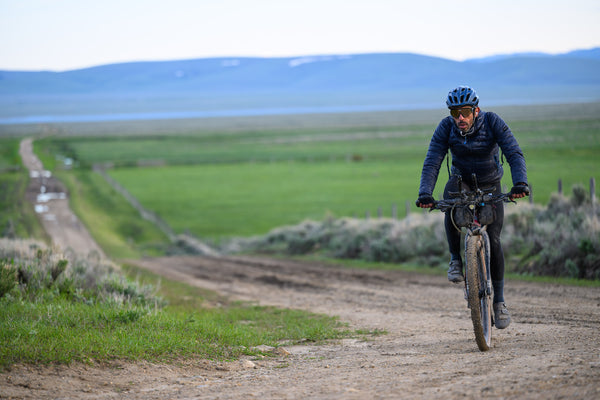
The Tour Divide is thought to be the hardest ultra-endurance race on the planet. 2,754 miles, with over 200,000ft of elevation, from Canada to the Mexican Border. Traversing the length of the Rocky Mountains. Combine this with the harsh weather conditions, and the odd Bear encounter, and you have an extreme test of both body and mind.
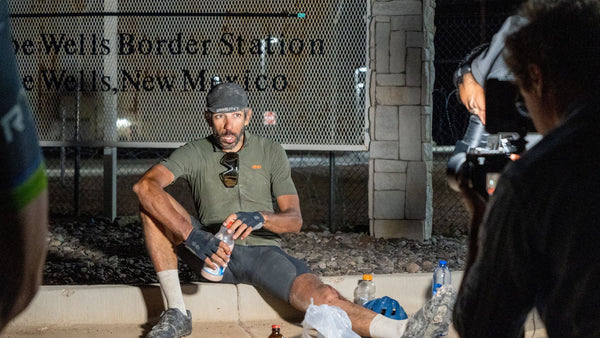
It wouldn’t be the first time that the Frenchman has attempted to win The Tour Divide. This win is the conclusion of an eight year journey, that saw Sofiane take on the route for the first time in 2016, where he finished third.
A few years later, in 2019, Sofiane returned to The Tour Divide with the aim of beating the course record. He led from the start, and was on track to beat the record when a massive storm front came in covering the route in snow, and stopping him in his tracks.

Fast forward to 2022, Sofiane was back with one aim. To win The Tour Divide 2022. Sadly, there was no record on offer this time around as the course was re-routed due to wild fires.
Onboard his Rapide HT with rigid forks, Sofiane led from the off. Braving some of the harshest conditions in The Tour Divide Race's history. Riding through f reezing cold wind and rain, to scorching hot heat. Not to mention ‘the peanut butter mud’, which saw him walking for miles through thick, ankle deep mud toward the finish line.
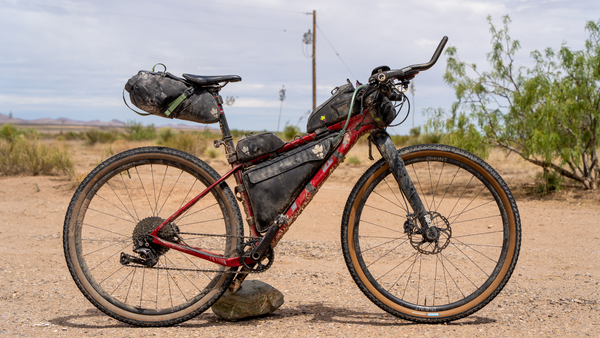
Above Sofiane's race rig - a Rapide HT frame with rigid forks.
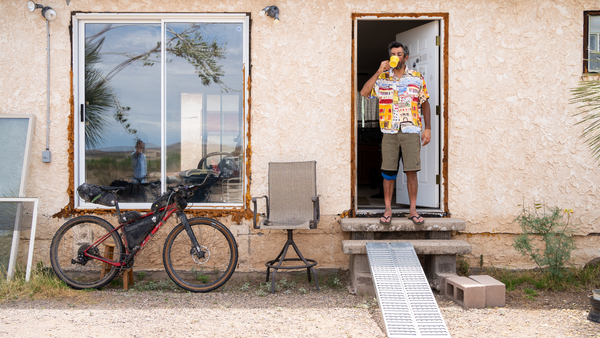
“I'm a stubborn individual and when I set my mind on something, I just won't let go,” Sofian wrote on Instagram. “I did it. Not to show the world. Not to prove doubters wrong. Just to keep a promise I made to myself. Because these are the most important." Sofiane Sehili .
You can listen to a pretty cool podcast by Bikes or Death that covers Sofiane's crazy ride here .
- Share full article

A 2,700-Mile Cycling Race Is Now Even More Extreme
The Tour Divide, a bikepacking race from the Canadian Rockies to the U.S. border with Mexico, has always been a test of fortitude. But extreme weather is making it much more dangerous.
Geof Blance riding the Tour Divide near Steamboat Springs, Colo. Credit... Daniel Brenner for The New York Times
Supported by
By Sabra Boyd
Sabra Boyd traveled from Banff, Alberta, to Antelope Wells, N.M., to follow the Tour Divide cyclists.
- July 4, 2022
Kevin Latta pushed his bike forward, following the Bull River down a ridge in the Canadian Rockies. The tire tracks from riders ahead of him had disappeared.
He searched for a shallow place to cross. But after just one step, the swollen river swept Latta and his bike downstream. Gripping the bike in one hand, he swam one-armed, dragging his gear through the churning current. He reached for a tree branch and hoped it would hold.
Two days before, about 200 cyclists had gathered in Banff, Alberta, to start the Tour Divide, an ultra-endurance event in bikepacking — backpacking by bike — that extends all the way to the U.S. border with Mexico. Some riders are professional athletes, others simply recreational cyclists with an interest in the extreme. There is no entry fee and no prize — only the glory of surviving one of the most grueling solo competitions in the world.
“It’s like the Wild West,” said Matthew Lee, a cyclist and organizer of the race — or “disorganizer,” as he calls himself.
The route twists through almost 2,700 miles of the Continental Divide’s alpine peaks, woodlands, picturesque towns and deserts. Most riders see bikepacking alone through the Rockies as a personal challenge, a transcendent test of their fortitude rather than a competition against others. But in recent years, extreme weather has become one of their most dangerous adversaries as they race against flash floods, landslides, driving winds and wildfires.

Bryce Meyer for The New York Times
Riders gathered in Banff, Alberta, to set off on the grueling course.
They ranged from professional cyclists to amateur enthusiasts who wanted to take on the challenge.
The first leg of the journey is through trails in the forest approaching the Canadian-U.S. border.
It can take anywhere from two weeks to two months to finish the race.
This year’s Tour Divide was supposed to mark a return to normal. The race was canceled in 2020 amid the coronavirus pandemic and shortened in 2021 because of pandemic-related border closures. But nothing about the race this year has been normal.
When it began on June 10, the cyclists knew that trouble might await them toward the finish: Wildfires were raging across hundreds of thousands of acres in New Mexico, the final state on the route. The fires were fueled by one of New Mexico’s driest spring seasons on record and by warmer temperatures linked to human-caused climate change. One of the fires, the state’s largest ever, was a prescribed burn that blazed out of control .
Near the start line on the morning of their departure, riders lamented that they would have to divert around some of the New Mexican scenery they had anticipated, like Gila National Forest. “It is what it is,” conceded Sofiane Sehili, an ultra-endurance racer from Paris.
Sara McDermott, who had arrived from Big Sky, Mont., said she had learned to plan for wildfires because of their inevitability on the course. “It feels claustrophobic,” she said. “I get a sore throat right away and a headache.” She and the other riders carried buff masks to cover their faces for riding through smoky conditions. Most planned to abandon the race if the smoke became too thick in Colorado or New Mexico.
A chorus of cheers erupted when the riders set off, startling magpies, crows and squirrels in the nearby forest. Bear bells jingled down the hill. Shoes snapped into pedals and bikes whizzed by.
The morning sky was blue and brisk. Only the nearby Bow River, muddy and swift with spring snowmelt, foreshadowed the dangers to come.
Airlifted out
Before the riders made it out of Canada, rain and snowstorms intercepted their path. The conditions complicated Latta’s encounter with the Bull River.
When Latta pulled himself out, he realized that his broken GPS device had sent him 10 miles bushwhacking in the wrong direction. “It didn’t occur to me that I was off the route,” he said. “I just thought this was the continuing sadism of the 2022 Tour Divide.”
Inching back up the ridge, “I was literally moving my bike 10 feet at a time,” Latta said. “And I would say, ‘OK, I’m going to go to that rock, then rest.’” When he spotted a tree that wasn’t covered in snow, he leaned his bike against its trunk and fell asleep, exhausted.
The storm was part of a particularly wet June in Fernie, British Columbia, which had more than five inches of rain, 20 percent above the average, according to Armel Castellan, a meteorologist for Environment and Climate Change Canada. Record-breaking rains last winter and the subsequent erosion also made rivers more prone to flooding, Castellan said.
Once he reached a road, Latta caught a ride to Fernie from a forest service truck. The Tour Divide has few rules, but because Latta accepted the assistance, he voluntarily disqualified himself. Yet he was still determined to finish what he had started and ride the rest of the route to Mexico.
The 15 cyclists airlifted out were not so lucky. “They tried to push their bikes for six or seven hours through wet snow,” said Simon Piney, the head of search and rescue in Fernie. “Bike riders aren’t well equipped to get through those types of conditions.” Eleven cyclists were treated for hypothermia and four for trauma, he said.
“From a rescue perspective, this stretched our resources considerably because of the flooding in the valley,” Piney said, adding, “We’re happy that nobody died.”

Lido Vizzutti for The New York Times
The tormenting rain and cold weather made for difficult and sometimes dangerous conditions for the riders navigating through Montana.
A.J. DeLauder, from Aurora, W.Va., commiserated with other Tour Divide riders after reaching a hotel in Bigfork, Mont.
“This rain is biblical,” DeLauder said. Earlier in the day, DeLauder had taken shelter in a baseball field dugout to escape the rain and change out of wet gloves.
DeLauder had feared hypothermia, but managed to get to the hotel in Bigfork to warm up.
Paul Anson, a cyclist from Britain, was one of the airlifted riders, though his circumstances were unique: His bear spray canister exploded, causing him to swerve and hit a rock. “Seven broken ribs are a tough price to pay,” Anson said.
The conditions farther along the course were no better. The same weekend, destructive flooding and mudslides caused by record rain and melting snow forced the closure of Yellowstone National Park , which the Tour Divide route skirts as it meanders through Montana, Idaho and Wyoming. And the threat of wildfires still loomed farther south.
Increasing dangers
The Tour Divide has had a free-for-all nature since the Adventure Cycling Association first mapped the route in the 1990s. “The spirit of the event has always been anti-establishment,” said Lee, the race organizer. This approach has fostered a tight-knit community among the cyclists.
“I love that it belongs to us,” said Alexandera Houchin, who holds the women’s record on a single-speed bike : 18 days 20 hours 26 minutes. “The ultra-endurance community is like my family.”
“It’s become ceremony for me,” added Houchin, who is an Anishinaabe citizen of the Fond du Lac Band of Lake Superior Chippewa. “And I think that’s something a lot of my Indigenous brothers and sisters can relate to. I just want more Native people riding.”
The fastest riders finish the Tour Divide in just over two weeks. For others, the grueling trek can take two months. To save time, many sleep four to six hours a night in a sleeping bag shell called a bivouac sack.
Riders have always faced dangers on the Tour Divide, including bears, blisters, dehydration and smoke inhalation. A cyclist was killed in a collision with a truck during the race in 2010. Last July, a violent grizzly bear attack occurred in a Montana town where many bikepackers camp.
The effects of climate change have only increased the danger.
During last year’s race, flames lined the horizon as Sarah Swallow , a Tour Divide competitor, headed toward the Yampa River. It was the third day of Colorado’s Muddy Slide Fire , and smoke shrouded the sun in a pulsing fluorescent shade of orange. Swallow pushed up one last hill, needing to reach the river before local officials closed the crossing. Her only other option was to detour onto a long, busy highway, and that was time she couldn’t afford to lose.
The smoke billowed as Swallow made it across a dam. The road closed behind her. Helicopters flew in search of more water as residents evacuated .
“In the time that it took me to ride past the fire, the winds picked up and I watched it go from a really small thing of smoke to 50 times bigger,” Swallow recalled. “The smoke plume followed me. When I was camping that night, it rained ash.” She is not competing in the Tour Divide this year, partly, she said, because of the extended fire season.
Leighton White, a firefighter in Steamboat Springs, Colo., fought the blaze that Swallow raced against. He is also a former Tour Divide rider. “Around 2009, you could see the exponential growth of dead trees” along the route, he said, noting how shorter winters and longer dry seasons have led to the explosion of bark beetle populations whose nests weaken lodgepole pines , turning entire mountainsides brown and killing young saplings.

Oak Creek Fire and Rescue
The Muddy Slide Fire affected the race in 2021.
The burn scar from the fire is adjacent to the route this year, near Steamboat Springs, Colo.
Sofiane Sehili of France, the leading cyclist of the race, crossed a river south of Steamboat Springs.
“In 2019 I was caught in the biggest June snowstorm in the history of Colorado,” he said. “I feel like anything can happen. So yes, definitely climate change. You can see it on this race.”
Tom Davis, left, a local resident, wanted to see Sehili on the course. They talked as they crossed paths.
Fire has dashed many dreams on the Tour Divide in recent years. Lael Wilcox, who in 2015 set the Tour Divide women’s record of 15 days 10 hours 59 minutes, attempted an individual time trial last August to try to beat Mike Hall’s record of 13 days 22 hours 51 minutes. (Hall, who set the record in 2016, was fatally struck by a car in an Australian race the next year.)
But as Wilcox began her attempt, smoke from nearby wildfires permeated the air almost from the start. “It was just awful,” Wilcox said. “I mean, you’re in this beautiful place and you can’t even see the mountains because it’s a layer of white.” Four days in, Wilcox was forced to leave the course. Her lungs were shutting down from the smoke.
The planet’s warming climate has extended the wildfire season in the American West, increasing the risk from larger, more frequent blazes. “We are no longer waiting for climate change to happen,” said Kira Minehart, a doctoral student at Oregon State University’s College of Forestry, who rode a section of the Tour Divide two years ago. “It is right here and now.”
As snowpack declines in many places, Minehart said, the consequences can be dire for Tour Divide riders, who prefer to filter water along the way instead of carrying gallons of water that can slow them down. It can also be catastrophic for the landscape, since snowpack can help mitigate wildfires.
Jalen Bazile, a founder of the Black Foxes , a collective of Black cyclists, emphasized the importance of training and preparation to avoid making panicked decisions in unfamiliar environments. Riding the Tour Divide in 2017, Bazile had to reroute 300 miles to avoid a Montana wildfire. Bikepacking, he said, “forces us to really take inventory of who we are and what we’re capable of.”
A triumphant finish
Sehili, the racer from Paris, crossed from Colorado into New Mexico in first place, just as the Southwest’s monsoon season arrived to help extinguish the raging fires. The winds that cyclists had been riding against for nearly two weeks — winds that had whipped up flames across the desert — now brought torrential rain. The risk of heavy rainfall and more dangerous flooding after wildfires has been exacerbated by global warming , a recent study found.
Thunder silenced the cicadas, and the humid air was filled with the spicy-citrus scent of the creosote bush. Soon, Sehili and his bike were covered in what he called “New Mexico death mud.”
Andy Leveto, a rider from Bellingham, Wash., welcomed the rain — “my first shower in a week.” But his goal of riding through the Polvadera Mesa, which he had heard was a “beautiful, gorgeous, kind of rough and unrelenting section,” was spoiled by a detour put in place because of the wildfires. Leveto would finish the race fifth.

Ramsay de Give for The New York Times
Tyler Gatlin and Patrick McKellips crossed the Abiquiu Dam in New Mexico.
Gatlin was about halfway through New Mexico on Saturday.
McKellips took a break to talk to a biker who was starting the Tour Divide route northbound.
McKellips and Gatlin bought drinks and snacks at a grocery store. Cyclists venture into the towns on the route to resupply and rest when they need to.
Carl Gable made his way down a stretch of New Mexico road.
Sehili came close to breaking Hall’s course record, crossing the finish line in Antelope Wells, N.M., at 11:36 p.m. on June 24, after more than 14 days on his bike. He was greeted by a group of fans and friends. Somehow, after thousands of miles, he found the strength to lift his bike above his head for a photo.
To break the record someday, Sehili said he would need to pick a different date for an independent time trial because June has become too unpredictable with its fires, floods and winds. “In 2019 I was caught in the biggest June snowstorm in the history of Colorado,” he said. “I feel like anything can happen. So yes, definitely climate change. You can see it on this race.”
After taking some selfies, Sehili and the group gathered at Jeffery Sharp’s bike ranch. At the property’s entrance, a bicycle shrine adorned with artwork, raw turquoise stones, sun-weathered bike shoes and a placard engraved with “Mexico” greets visitors.
Everyone went to the main room, where a laptop tracked the other racers. Two chiropterologists researching local bats baked pizza while a ranch hand named Jimbo made sure everyone had drinks. Sehili sat for an interview with the “ Bikes or Death ” podcast while he held an ice pack on his leg.
“I think this might hurt,” said Mallory Davies, one of the bat researchers, who had a first aid kit and helped Sehili bandage an injury. “I don’t think so,” Sehili said. “I’m a bikepacker.”
Sehili laughed when asked whether the heavy rain was good luck for the race because the storms helped put out some wildfires. He said that in the hierarchy of bad conditions, the worst is riding into 45-mile-per-hour winds.
In recent years, racing the Tour Divide has been as unpredictable as a wildfire in New Mexico or destructive floods in Yellowstone. Some of the bikepackers still on the route may yet encounter new fires or other hazards.
Ultimately, the Tour Divide is like most ultra-endurance races: If you make it to the end, you’ve won.

Explore Our Weather Coverage
Extreme Weather Maps: Track the possibility of extreme weather in the places that are important to you .
Blizzard or Nor’easter?: What’s the difference between these storms? How do you stay safe in either? Here’s what to know .
Tornado Alerts: A tornado warning demands instant action. Here’s what to do if one comes your way .
On the Road: Safety experts shared some advice on how snow-stranded drivers caught in a snowstorm can keep warm and collected. Their top tip? Be prepared.
Climate Change: What’s causing global warming? How can we fix it? Our F.A.Q. tackles your climate questions big and small .
Evacuating Pets: When disaster strikes, household pets’ lives are among the most vulnerable. You can avoid the worst by planning ahead .
Advertisement
managing your cycling calendar and bucket list
- english dutch french spanish italian
Modal title
Not a member yet? Sign up
Enter your email address below and instructions to reset your password will be sent by email
more filters +
- bikepacking
- cyclosportive
- orienteering
- team time trial
- uphill time trial
- XCM marathon
- cyclo-cross
- Distance(km) Elevation(m)
- cycling-calendar
Tour Divide Ultra Endurance 2024
Tour divide ultra endurance.
Friday 14 Jun 2024 - Banff
previous editions
--> Banff ()-->